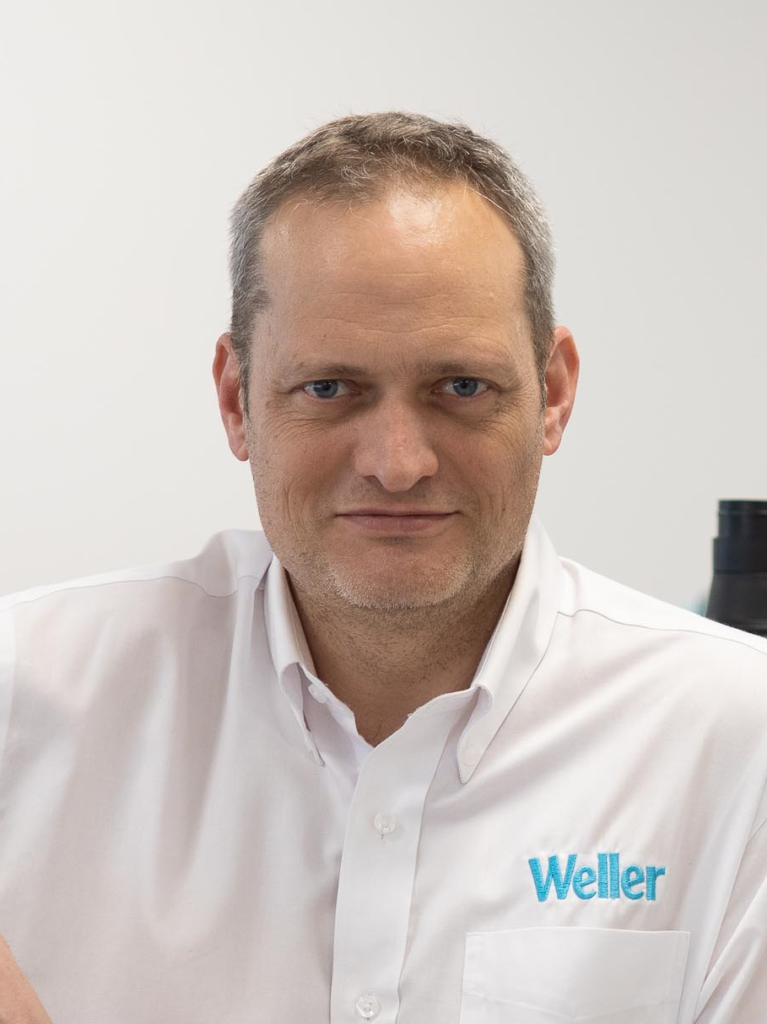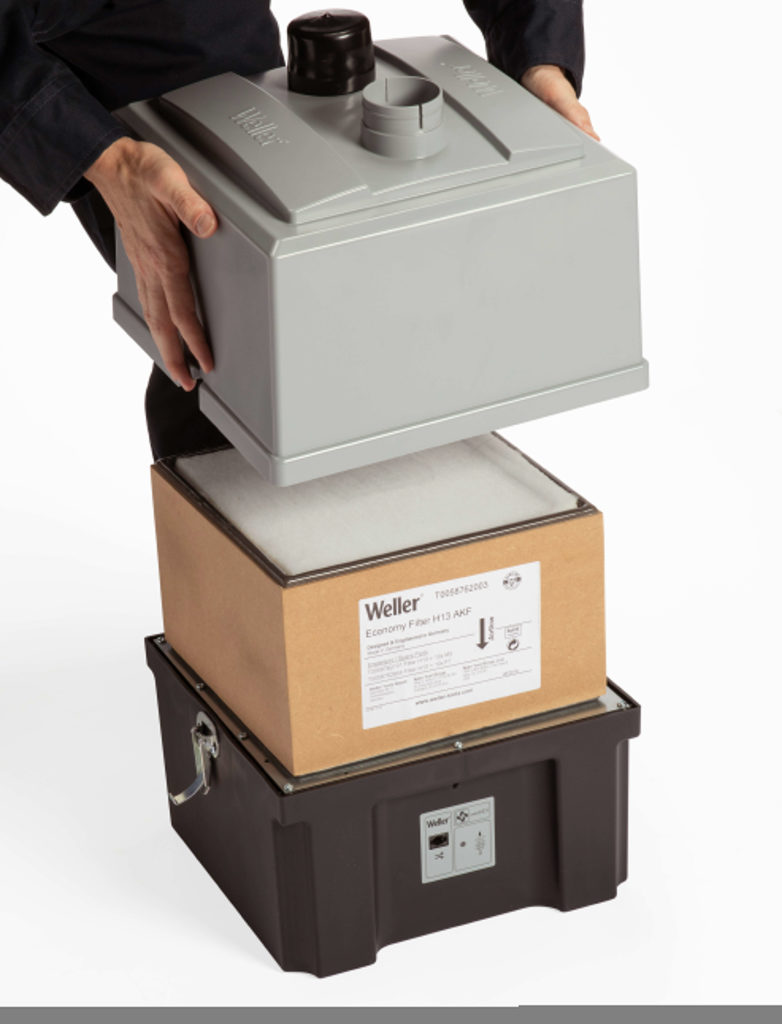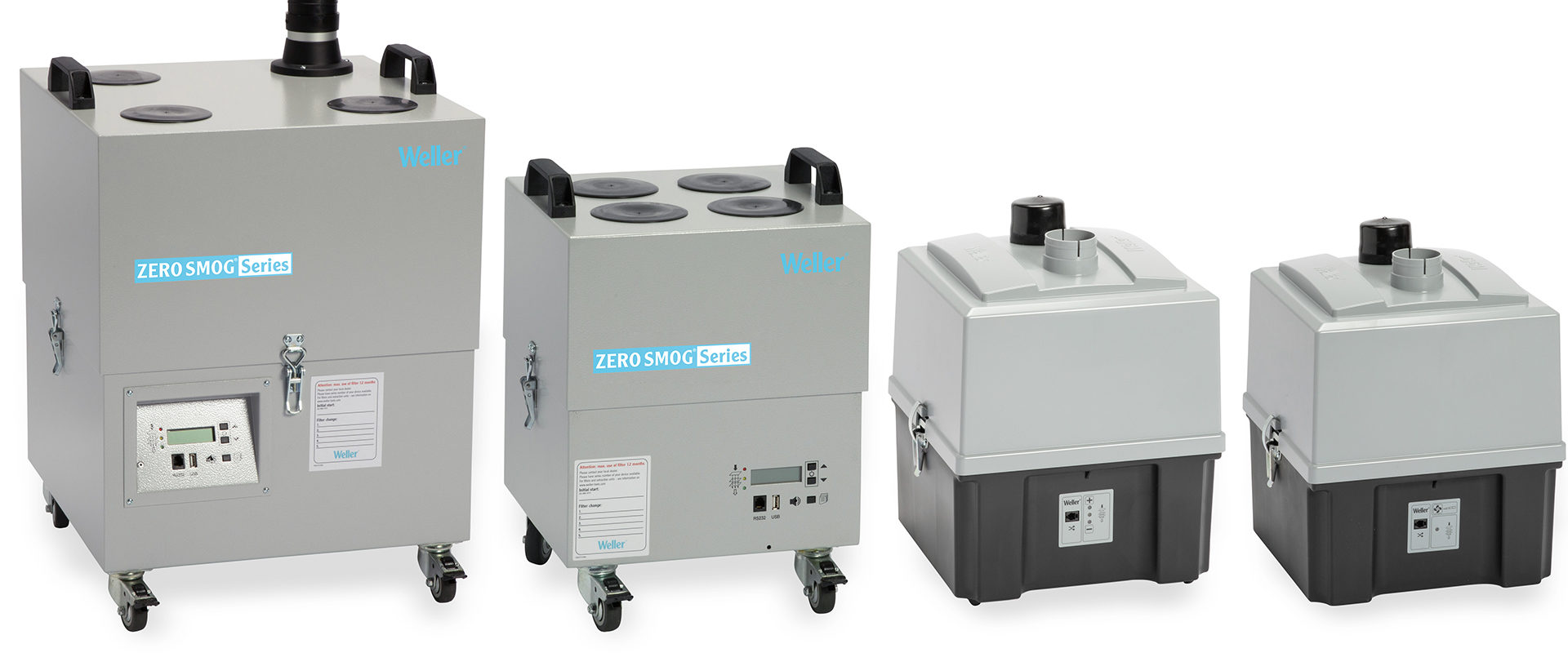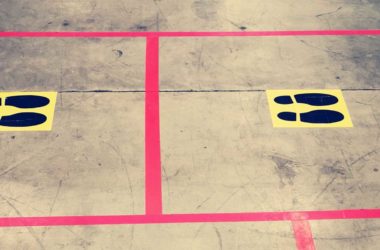
Gerald Gardener, Global Product Manager, Filtration, Weller Tools
Gerald Gardener is a qualified Mechanical Engineer and passionate about everything connected with Weller Engineering and Solutions. He has been working closely with Weller customers to provide clean air in workplaces with a range of Weller Fume Extraction Solutions.
Air we breathe is the most vital substance for our survival. One could live for a month without food, days without water but only minutes without air.
We breathe over 10000 litres of air a day. Dust and pollutants are everywhere. Pollutants you see are one thing, but the eye can only see specks to about half the diameter of a hair. What about the millions of invisible particles?
Luckily the lungs do have cleansing mechanisms, but these can only cope with normal pollutant levels. Overwhelm your lungs and they can’t cope, continue to pollute your lungs and the damage is irreversible.
1.Why is filtration important when soldering?
Because dangerous “small” particles and gases that are formed during soldering.
And it is the combination of gases and particles that are formed during soldering is treacherous when the gas molecules get stuck on the particles and are inhaled and end up deep in the lungs when the particles are so small.
Many times is also different types of harmful chemicals involved related to soldering.
2. Why Weller Filtration units?
The filter is the key element to efficient filtration.
Weller has a wide range of filtration units and filters to cover many application requirements.
All Weller filters contain granular gas filtration media, even the entry unit Zero Smog EL has prefiltering, HEPA particle filter and almost 2kg of granular activated carbon.

Larger Weller units have “automatic flow control” that automatically regulate the airflow according to the numbers of operators working.
They also have communication with the Weller soldering stations and switch off when the operator is not working, and this result in longer lifetime of the filters and reduce noise.
3. How does the filtering work?
Weller filters comprise mostly of 3 stages:
- Prefilters for larger particles
- Large surface area HEPA filters for very tiny particles
- Chemical granules for adsorbing invisible gases
4. Which Weller unit is best?
The choice of filtration model depends on basically the following criteria:
- the type of pollutant
- the concentration of pollutant in this air and the volume of air that needs filtering
- the number of hours/day process is active
5. What polluting gases can the Weller filters remove?
Weller has a database of chemicals that the filters can adsorb. Filters can contain 100% activated carbon or 100% potassium permanganate or a blend of the 2.
So depending on what the pollutant is, one of these options is better.
A “rule of thumb” when filtrating chemicals is to choose a filter unit with a large amount of granular media, to get a longer lifetime of the filters.
6. What if a customer is not sure what type of filter media is required for their application?
Apart form the database and experience Weller has, we also has access to laboratory testing and can advise on the suitability of the various filters currently offered.
Talk to Weller, we can advise you.
7. Differences between the Weller units
The Zero Smog EL is Weller’s entry unit. It may have reduced features but retains the technology of the filters.
A very popular unit is the Zero Smog TL. This has 30% more suction power than the EL and is an ideal solution for 2 operators. It also has added features like sound insulation and a remote control.

The Zero Smog 4v and 6v are bigger units for multiple simultaneous users and has feature packed software for filter status, continuous flow control and communication with soldering stations. They are also modular with versions being quite large.
The MG130 is a neat, compact and quiet unit. It has high content of filtration media for its size.
The MG100 and MG140 are very popular in highly specific, technical, laboratory or high-end type applications as they have large filters (up to 6,5kg of granular media). There is also a wide variety of different filters for these models including filters for Cleanroom applications. There are several other models for specific applications.











